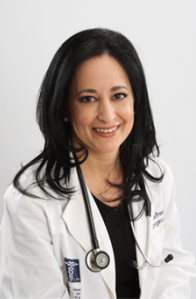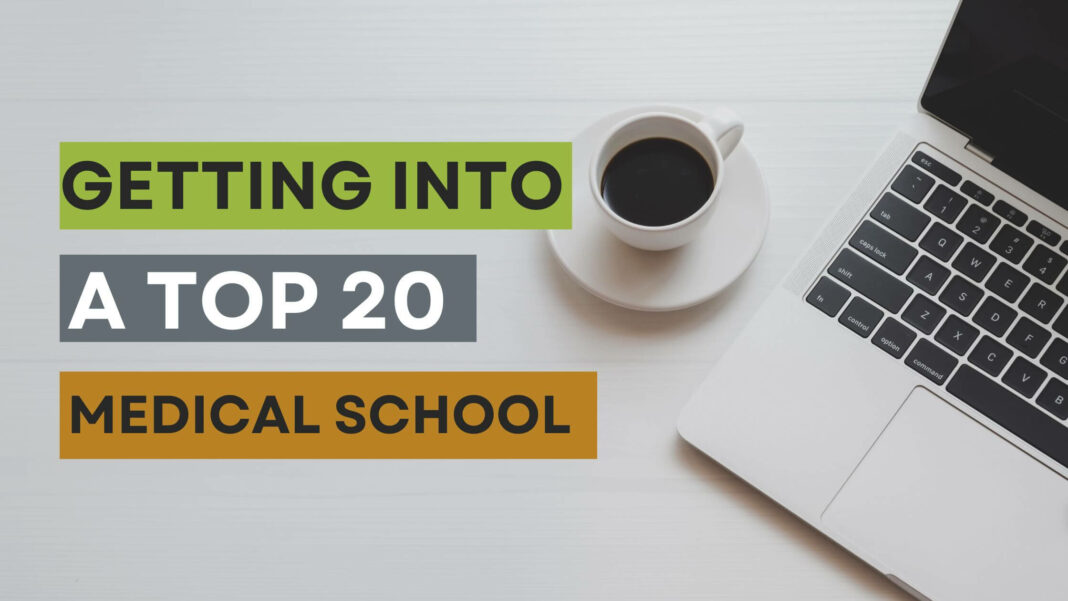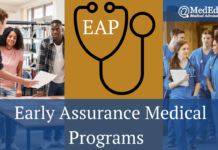Medical School Rankings: 20 Best Medical Schools in the US
Dreaming of getting into Johns Hopkins? Harvard? Columbia? Penn? Any top-ranked medical school? You’re not alone. Many medical school hopefuls hope to grab a spot in the first-year class at one of the 20 best medical schools in the United States.
But med school admissions are extraordinarily competitive in general — and if you’re focused on medical school rankings and getting into of the “best” medical schools, you’ll have to up your game even more.
It’s about far more than earning perfect grades in a rigorous curriculum and an excellent MCAT. To be frank, most applicants to top-ranked medical schools have these qualifications. Even if you’re coming from an elite undergraduate college, you’ll need to set yourself apart through other means if you want a chance of admission at one of the “best” med schools in the country*.
In fact, undergraduate prestige has much less impact in the medical school admissions process when trying to get into a top-20 school.
*As a caveat, at MedEdits we consider all United States medical schools outstanding. The competition is so fierce that even a single acceptance is a significant accomplishment.
What are the top 20 medical school rankings?
According to U.S. News and World Report Rankings, these are the 20 best medical schools in the U.S. based on 2023-2024 medical school rankings:
| Medical School Ranking | Medical School | Location |
| 1 | Harvard University* | Boston, MA |
| 2 | Johns Hopkins | Baltimore, MD |
| 3 | University of Pennsylvania (Perelman) | Philadelphia, PA |
| 4 | Columbia University | New York, NY |
| 5 (tie) | Duke University | Durham, NC |
| 5 (tie) | Stanford University | Palo Alto, CA |
| 5 (tie) | University of California – San Francisco | San Francisco, CA |
| 5 (tie) | Vanderbilt University | Nashville, TN |
| 5 (tie) | Washington University in St. Louis | St. Louis, MO |
| 10 (tie) | Cornell University (Weill) | New York, NY |
| 10 (tie) | New York University (Grossman) | New York, NY |
| 10 (tie) | Yale University | New Haven, CT |
| 13 (tie) | Mayo Clinic School of Medicine (Alix) | Rochester, MN |
| 13 (tie) | Northwestern University (Feinberg) | Chicago, IL |
| 13 (tie) | University of Michigan-Ann Arbor | Ann Arbor, MI |
| 13 (tie) | University of Pittsburgh | Pittsburgh, PA |
| 13 (tie) | University of Washington | Seattle, WA |
| 18 (tie) | Icahn School of Medicine at Mount Sinai | New York, NY |
| 18 (tie) | University of California—Los Angeles (Geffen) | Los Angeles, CA |
| 18 (tie) | University of Chicago (Pritzker) | Chicago, IL |
| 21 | University of California San Diego | San Diego, CA |
*Harvard Medical School said they withdraw from US News rankings in 2023-2024 but are still listed.
Top 20 Medical School Average MCAT scores
To be competitive for a highly ranked medical school, we recommend an MCAT score of 517 or higher. The only exception is if you are an in state applicant applying to one of the state schools on this list (University of California or University of Washington)
| Medical School Ranking | Medical School | Medical School Average MCAT |
| 1 | Harvard University* | 520 |
| 2 | Johns Hopkins | 521 |
| 3 | University of Pennsylvania | 522 |
| 4 | Columbia / Vagelos | 520 |
| 5 (tie) | Duke | 518 |
| 5 (tie) | Stanford | 517 |
| 5 (tie) | UCSF | 515 |
| 5 (tie) | Vanderbilt | 521 |
| 5 (tie) | Washington University | 521 |
| 10 (tie) | Cornell / Weill | 519 |
| 10 (tie) | NYU / Grossman | N/A |
| 10 (tie) | Yale | 521 |
| 13 (tie) | Mayo / Alix | 521 |
| 13 (tie) | Northwestern / Feinberg | 520 |
| 13 (tie) | University of Michigan | 516 |
| 13 (tie) | University of Pittsburgh | 517 |
| 13 (tie) | University of Washington | 512 |
| 18 (tie) | Icahn School of Medicine / Mount Sinai | 517 |
| 18 (tie) | University of California—Los Angeles (Geffen) | 512 |
| 18 (tie) | University of Chicago / Pritzker | 521 |
| 21 | University of California San Diego | 515 |
What Medical Schools Won’t Participate in Future US News and World Report Medical School Rankings (2024)?
| Medical School | City/State |
| Brown Warren Alpert School of Medicine | Providence, RI |
| Chicago Medical School at Rosalind Franklin University of Medicine and Science | Chicago, IL |
| Columbia University Vagelos College of Physicians and Surgeons | New York |
| Duke University School of Medicine | Durham, NC |
| Harvard Medical School | Boston, MA |
| Icahn School of Medicine at Mount Sinai | New York, NY |
| Johns Hopkins University School of Medicine | Baltimore, MD |
| Kaiser Permanente Bernard J. Tyson School of Medicine | Pasadena, CA |
| Stanford School of Medicine | Palo Alto, CA |
| University of Chicago Pritzker School of Medicine | Chicago, IL |
| University of Michigan | Ann Arbor, MI |
| University of Pennsylvania Perelman School of Medicine | Philadelphia, PA |
| University of Washington School of Medicine | Seattle, WA |
| Washington University School of Medicine | St. Louis, MO |
How hard is it to get into a top medical school?
Getting into medical school has always been difficult, but today, applicants are facing more competition than ever before. This is across the board — not just at the top, brand-name schools. According to the Association of American Medical Colleges (AAMC), the number of applicants rose by 17.8% during the 2021–2022 admissions cycle but this was likely due to the pandemic. Last year, 2022-2023, numbers returned to “pre-pandemic” norms and 41% of medical school applicants were accepted to at least one school.
Remember, too, that the majority of people who apply to medical school — any medical school — are well-qualified, with strong MCAT scores and GPAs. This is a self-selecting pool of people who want to be physicians and believe they are qualified for the profession. So, unfortunately, the odds are not in your favor. It’s extraordinarily difficult to get into even the seemingly less selective medical schools.
What do I need to get into one of the best 20 medical schools in the US?
1. Excel in your academics and perform well on your MCAT
It is basic, we know. But, your academic performance and MCAT score are the most important “ingredients” for getting into a top-20 medical school.
The most competitive applicants will have a 3.9+ GPA and a 518+ MCAT.
However, we work with applicants who have GPAs of 3.8+ and MCATs of 515+ who are competitive for top-20 schools depending on their other accomplishments.
2. Show expertise outside of your coursework.
Your academic achievements will get you to the starting gate, so to speak. But your accomplishments outside the classroom will make you truly shine. So, assuming you have the GPA and MCAT to be competitive, your scholarly and extracurricular work is what will solidify your candidacy.
You want to demonstrate excellence and a niche in extracurricular activities, both medically-related and otherwise. A strong candidate will have research, shadowing, or other relevant experience that demonstrates their passion for medicine and ability to get involved in the field — even before they’re technically a member of the profession.
In fact, we consider outstanding research a requirement for any student hoping to get into any U.S. allopathic (M.D.-granting) medical school. Excellence in research, ideally with a well-defined niche or specialty, is necessary if you are hoping for a top-20.
Additionally, medical schools value volunteer, advocacy, social justice, and community service work. Giving back to the community is the cornerstone of the medical field, and by showing your commitment to volunteering, you are proving that you truly embody that spirit. It is also important to develop cultural competence and to show your ability to work with and understand people from backgrounds that are different from your own.
You don’t even need to volunteer in a medically-related niche — it could be teaching/tutoring, working at a soup kitchen, or working to combat any type of inequities in this country. However, if you do find an opportunity to, for instance, combatting health care inequities in the U.S, that could be an added bonus.
Here are sample extracurricular profiles that would be competitive for a top-20 medical medical school:
Profile #1:
- Medical Scribe: 600 hours
- Teaching Experiences: 2700 hours
- Research Experience #1: 950 hours
- Research Experience #2: 1400 hours
- Research Experience #3: 800 hours
- Community Service Experiences: 700 hours
Profile #2:
- Medical Scribe: 550 hours
- Significant Impact Community Service Experience: 900 hours
- Teaching Experience: 900 hours
- Research Experience #1: 1000 hours
- Research Experience #2: 2000 hours
- Several Publications
Profile #3: As you can see from this profile, if you have a truly niche interest, you do not need as many hours of experience to excel.
- Niche Research Experience #1: 450 hours
- Niche Research Experience #2: 300 hours
- Niche Teaching Initiative: 650 hours
- Niche Leadership Initiative: 400 hours
- Community Service Experiences: 100 hours
3. Take care with your medical school personal statement and written application materials.
Your personal statement is one of the most important aspects of your application. This is a way to communicate your personality, goals, and qualifications beyond your grades and test scores. While your MCAT and GPA speak to your academic prowess, your personal statement demonstrates those personal qualities that can set you apart from other academically-qualified applicants.
You will be tasked with writing a personal statement for your primary application and will have additional opportunities to write about yourself in secondary applications; you should choose topics that are meaningful to you and really allow the best sides of yourself to shine through.
At the same time, you want to try your best to avoid repetition of topics as much as possible. Avoid cliche topics (e.g. “I want to be a doctor so I can help people”), and employ a narrative approach that truly conveys the unique facets of your character and why you want to be a physician.
4. Secure strong letters of recommendation.
You know that your performance in your undergraduate years matters — but it matters beyond the grades you get. You also need to be forming relationships with professors and advisors because some of these individuals will ultimately write your letters of recommendation.
A basic recommendation letter will attest to your strong academic performance in the instructor’s course. But a stellar one will discuss your personal qualities and qualifications — ones that will make you an exemplary medical professional. So, you need to nurture these relationships early and make yourself stand out as a student who has personal, professional, and academic characteristics that set you apart.
Your letters of recommendation won’t always come from your instructors at school. Some extracurricular advisors, such as a research mentor could also provide a reference. These professionals will write about the qualities and characteristics that medical schools are seeking as outlined by the AAMC core competencies.
5. Prepare for your medical school interviews.
If you have the opportunity to interview at a medical school, it means that you’ve already made it through application screening and review which already puts you in an elite group. That said, interviews are not a guarantee of admission. If you receive an invitation, you still need to prepare extensively, even though you have the qualifications the school is looking for.
Like personal statements, interviews offer the opportunity for admissions committees to get to know you as a person and a professional. The good news is that they already like you on paper. Now, you have to display those appealing characteristics in person (or over Zoom, as the case may be).
Go over the frequently-asked questions you’ll encounter in a medical school interview. Additionally, ensure that you are well-versed in your own history (this may seem like a no-brainer, but you’d be surprised at how much you can forget about yourself when you’re on the spot). Finally, practice to the point at which you feel comfortable but aren’t over-rehearsed. A friend or classmate can help you with your delivery and tone.
5. Persevere!
Ultimately, very few students are admitted to medical school at all, never mind the top 20 universities. You should put in the effort in all your options, including those you consider “safeties” (in reality, no medical school is truly a safety school). If you’re not admitted to one of your top choices but still get into a school on your list, that is a huge accomplishment, and you shouldn’t dismiss it.
If you’re truly committed to the medical field, then admission to any medical school you’ve applied to is something to celebrate. And if you don’t get in on your first try, then don’t give up — pursue other experiences, bolster your academics, improve your MCAT, take a gap year, gain expertise, and try again! The majority of students take time off before entering medical school, and it’s nothing to be ashamed of. In fact, showing perseverance will be attractive in the admissions process, especially if you make good use of your time between undergraduate and graduate school.
Good luck!
Do medical school rankings matter?
Medical school rankings can matter to some extent, but it’s not the only factor that should influence your decision when choosing a medical school. As I often tell our students, acceptance into ANY allopathic medical school in the United States can position you to get the residency you are hoping for in your top choice specialty.
Here are some things to consider when choosing a medical school:
- Finances: For many medical students, debt is a huge concern. Often state medical schools or medical schools that offer scholarships can save students hundreds of thousands of dollars. Going in to debt to attend a top-ranked medical school may be a factor when deciding where to attend.
- Quality of Education: Higher-ranked medical schools MAY have better resources, faculty, and research opportunities, which can contribute to a more comprehensive and rigorous education. However, this isn’t always the case. In fact, sometimes it can be tougher to compete for these opportunities at top-ranked medical schools.
- Clinical Opportunities: Medical schools with strong affiliations to renowned hospitals and medical centers may offer more diverse clinical experiences, exposure to cutting-edge medical techniques, and potential networking opportunities. However, often students who go to “lower ranked” medical schools may have faculty who are more committed to medical and clinical education and less distracted by outside pressures such as research and administrative duties.
- Research Opportunities: Higher-ranked medical schools might have more extensive research programs, allowing students to engage in medical research and contribute to advancements in the field. We find that students at all U.S. medical schools have access to research and many do research elsewhere during the summer after first year that they can continue with remotely.
- Residency Placement: Some highly-ranked medical schools have a track record of placing their graduates in competitive and prestigious residency programs, which can impact your residency placement. It is important to review the residency placement data for all medical schools you are considering. I can tell you that our students, regardless of where they go to medical school, can earn placement in top residencies and competitive specialties if they work hard during medical school and seek out opportunities to excel. Remember, it isn’t “the school” that gets you in to the residency you want; it is the work you do as a medical student that earns this placement.
- Access to Specialties: Certain medical schools may have strengths in particular medical specialties or areas of interest, so if you’re interested in a specific field, a higher-ranked school in that area could be advantageous. But, this is not always the case. In fact, some “lower-ranked” medical schools may be affiliated with residency programs that are the most prestigious in a given specialty. And, with away rotations, students can prove themselves at other institutions than their own.
- Prestige and Reputation: While not the only factor, attending a well-known medical school can carry a level of prestige that might be appealing to some. When applying to medical school, it is important to try and leave your ego aside! .
It is important to remember that medical education is rigorous and demanding regardless of the school you attend. Factors such as location, cost, curriculum, clinical teaching, and alignment with your personal goals and values are also crucial in making your decision. Lower-ranked schools can provide an outstanding education and clinical experiences and rankings should not be a huge factor when deciding where to attend.
Ultimately, the best medical school for you is one that aligns with your personal and career goals and provides the mentorship and educational resources you need.
Good luck!









